Key a plant
This keying exercise will be a guided exercise. The plant you will be identifying will be this one:

Identify parts
The first step is to identify all of the parts of the flowers and inflorescence.
Here is the inflorescence:
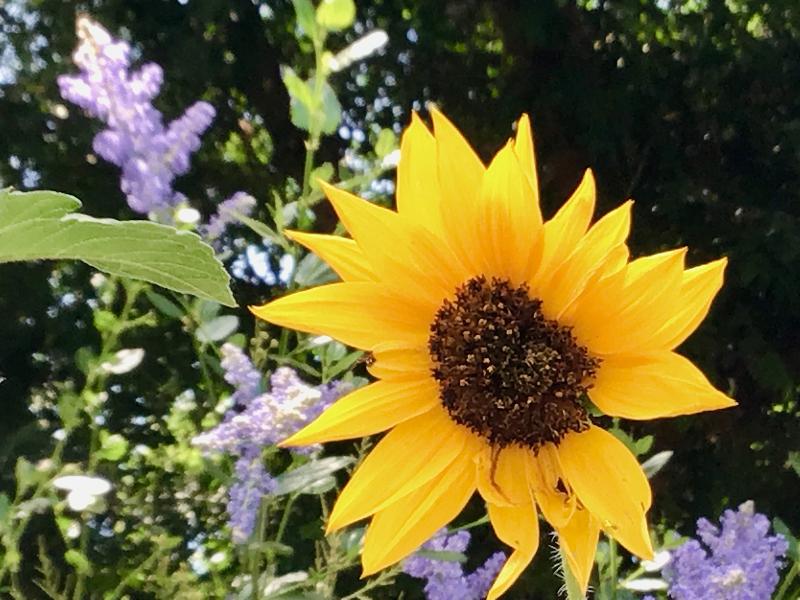
This is a longitudinal section of the head:
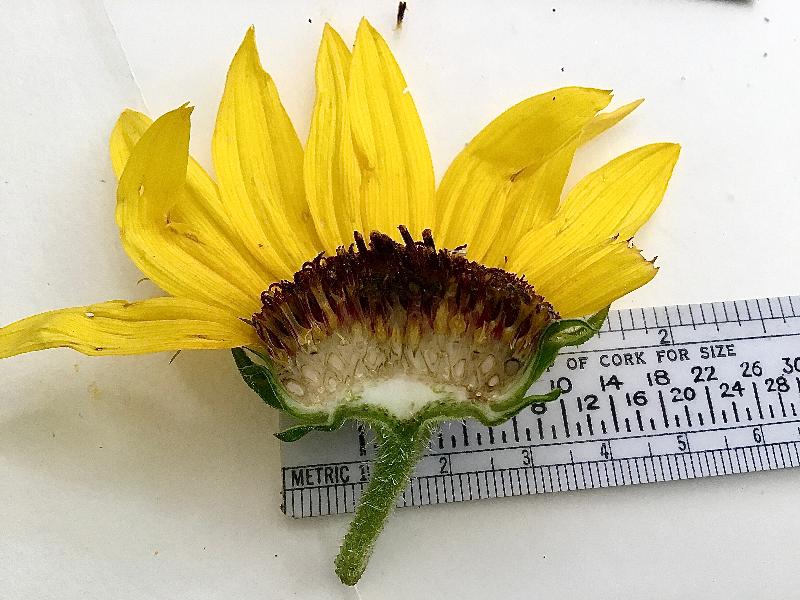
Ray flowers are usually pistillate or sterile. To develop fruit, the flower has to have both an ovary and a stigma/style (to receive pollen).
Last, note some basic information about the plant and the leaves:
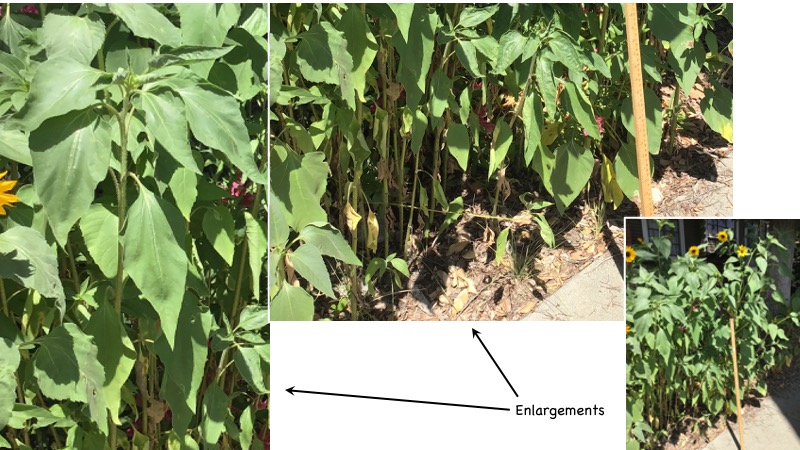
Run through the key
Now you are ready to begin working through the key. You already know that this plant is in the Asteraceae. In real life, you could go straight to the key to genera in the Asteraceae. For practice, though, start at the Key to Families in the Jepson eFlora.
The Asteraceae is a very large and variable family. Different species will have characteristics that lead you through the key in different directions. When you got to Asteraceae, you saw:
ASTERACEAE (2) {G6,7,8,9,12,14}
The "(2)" means that "Asteraceae" appears twice in this key (the Group 17 key).
The "{G6,7,8,9,12,14}" means that "Asteraceae" also appear in the keys for Groups 6, 7, 8, 9, 12, and 14 in the Key to Families.
Moving on to the Key to genera in the Asteraceae ("Key to Asteraceae"), you find that this is a very large key with groups (subkeys).
For this key you will need more information. Here is a photo of the involucre of your plant:
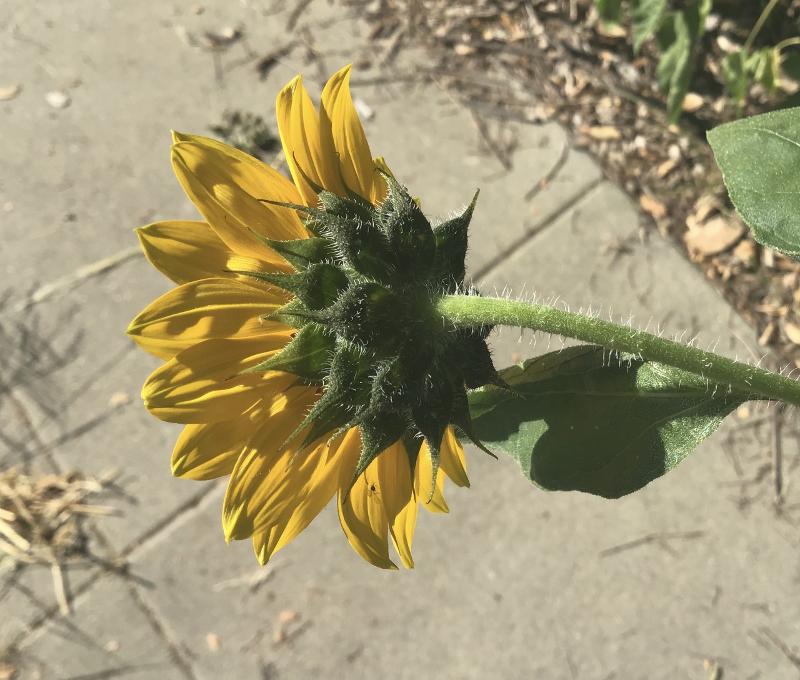
In the key for this group, Here is more information you will need:
Your first choice refers to the "rays". These are the strap-shaped corollas of the ray flowers.
The photo of paleae on the receptacle is shown again here:
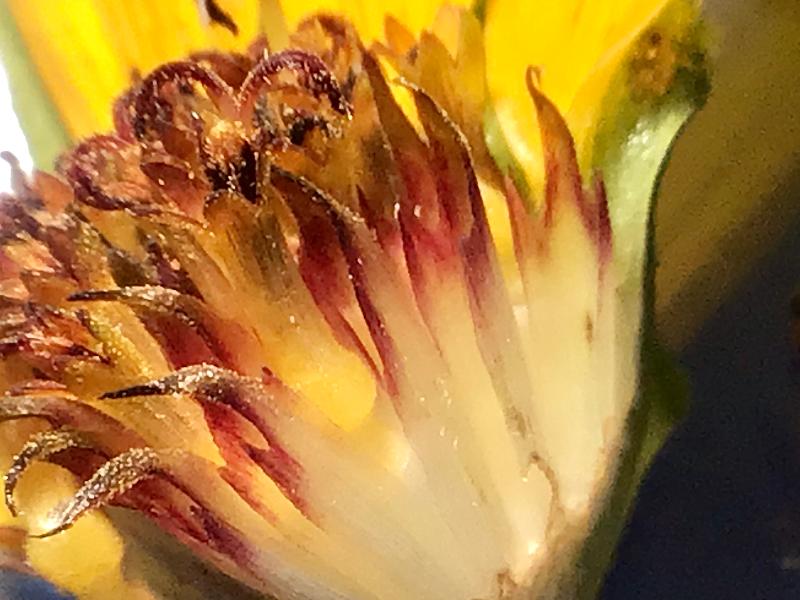
Achenes of this plant and achenes of a different species that has strongly compressed achenes is shown below:

Moving on to the Key to species in the Helianthus ("Key to Helianthus")...
Here are some more images you might need:
Phyllaries:
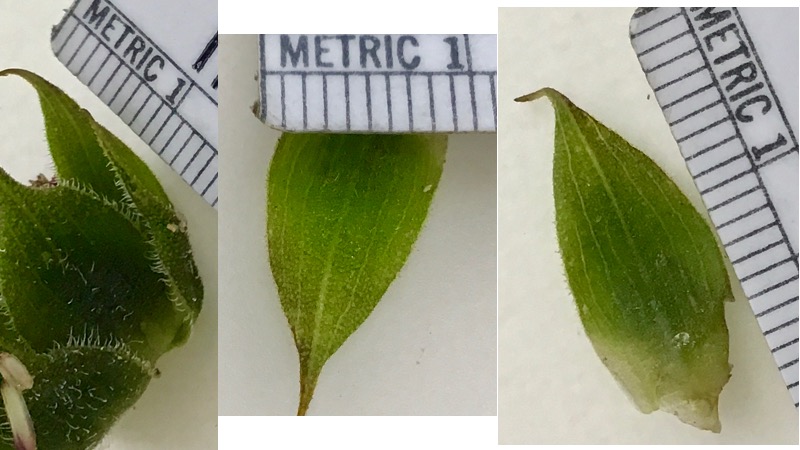
Leaves:

Stem surface:
